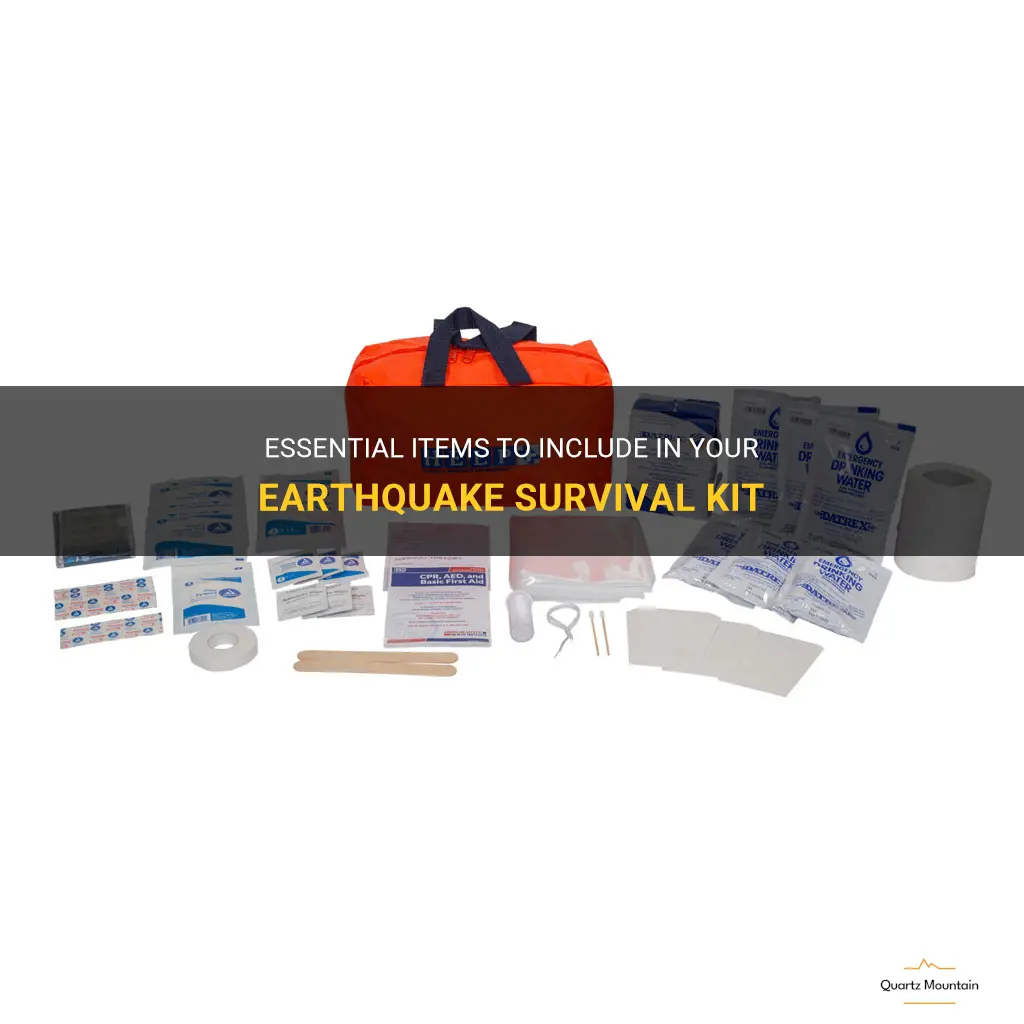
Earthquakes are unpredictable natural disasters that can strike suddenly, leaving individuals and communities in chaos. In such situations, having a well-prepared earthquake survival kit can be a lifesaver. While there are numerous items one could include in such a kit, some essentials should not be overlooked. From basic necessities like food and water to crucial items like flashlights and first aid supplies, this article will explore the must-have items to include in your earthquake survival kit. By being prepared and having these essentials on hand, you can increase your chances of survival and ensure the well-being of yourself and your loved ones during the aftermath of an earthquake.
| Characteristics | Values |
|---|---|
| Water | 1 gallon per person per day, for at least 3 days |
| Food | Non-perishable food, for at least 3 days |
| First Aid Kit | Including bandages, medication, and gloves |
| Flashlight and batteries | To navigate in the dark |
| Whistle | To signal for help |
| Dust Mask | To filter contaminated air |
| Plastic Sheeting and duct tape | To create a shelter or seal off areas |
| Wrench or pliers | To turn off utilities |
| Local Maps | To navigate and find emergency services |
| Cash | In case of power outages |
| Important Documents | Copies of IDs, insurance policies, and contact information |
| Clothing and Blankets | To keep warm and protect from weather conditions |
| Tools | Such as a Swiss army knife or multi-tool |
| Personal Hygiene Items | To maintain cleanliness |
| Cell Phone and Charger | To stay connected |
| Emergency Contact Information | For family and friends |
| Portable Radio | To receive emergency communications |
| Extra Batteries | For any electronic devices |
| Matches or Lighter | To start fires or for heat |
| Sanitation Supplies | Such as toilet paper, garbage bags, and disinfectants |
| Extra Cash and Coins | For emergency expenses or vending machines |
| Sleeping Bag or Blankets | For comfort and warmth |
| Communication Devices | Such as a whistle or megaphone |
| Extra Medications | If necessary |
| Baby Supplies | If needed |
| Emergency Phone Numbers | For local authorities and emergency services |
| Pet Supplies | If applicable |
| Entertainment Items | Such as playing cards or books |
| Waterproof Container or Bag | To keep important documents and supplies dry |
What You'll Learn
- What are the must-have essentials that should be included in a survival kit for an earthquake?
- Are there any specific items or tools that should be packed in the survival kit for immediate use during and after an earthquake?
- What type of food and water should be included in the survival kit to sustain individuals during an earthquake emergency?
- How important is it to include a first aid kit in the survival kit for an earthquake, and what items should be included in it?
- Are there any additional items or specific recommendations that should be considered when packing a survival kit for an earthquake?

What are the must-have essentials that should be included in a survival kit for an earthquake?
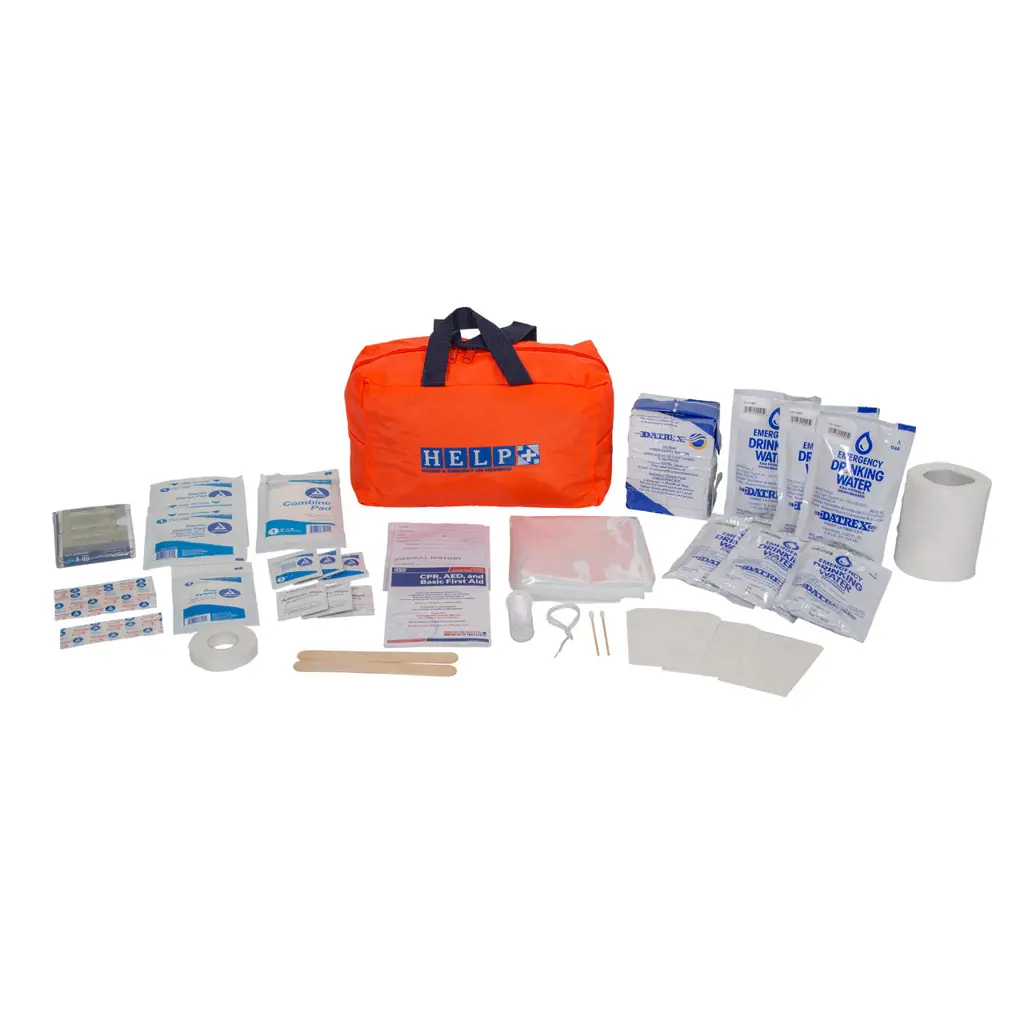
Earthquakes are natural disasters that can cause extensive damage and lead to life-threatening situations. Being prepared for an earthquake by having a well-stocked survival kit can greatly increase your chances of staying safe and surviving. Here are some essential items that should be included in a survival kit for an earthquake.
- Water: The first and most important item to have in your survival kit is water. You should have at least one gallon of water per person per day for a minimum of three days. Remember to also include water purification tablets or a water filter as a backup option.
- Food: Pack non-perishable food items that can be easily consumed without the need for cooking or refrigeration. Examples include canned goods, energy bars, dried fruits, and nuts. Don't forget to include a manual can opener.
- First Aid Kit: A fully stocked first aid kit is crucial in any survival situation. It should include items such as bandages, antiseptic wipes, pain relievers, tweezers, scissors, and any necessary prescription medications.
- Flashlight: In the event of an earthquake, power outages are common. Having a reliable flashlight with extra batteries is essential for navigating in the dark and signaling for help.
- Radio: A battery-powered or crank-operated radio will keep you informed about the latest news and rescue efforts. Make sure to include extra batteries if needed.
- Personal Documents: Keep important documents such as identification cards, passports, insurance policies, and emergency contact information in a water-resistant bag or container. It's also advisable to have copies of these documents stored electronically.
- Extra Clothing and Blankets: Pack extra clothing suitable for the climate and include items like rain jackets, hats, gloves, and sturdy shoes. Additionally, having emergency blankets or sleeping bags can provide warmth and comfort during the aftermath of an earthquake.
- Whistle: A loud whistle can be used to alert rescuers of your location if you become trapped or stranded. It is a simple, yet effective, tool for signaling for help.
- Tools: Include a multi-purpose tool, such as a Swiss army knife, which can be useful for various tasks. Other tools to consider are pliers, duct tape, and a wrench.
- Personal Hygiene Items: Don't overlook personal hygiene items such as toilet paper, wet wipes, hand sanitizer, and feminine hygiene products. These items can make a significant impact on your comfort and well-being during a crisis.
- Cash and Coins: In the event of power outages, ATMs and card payment systems may not be functioning. Having some cash and coins on hand can be useful for purchasing essential items or using payphones.
- Emergency Whistle: An emergency whistle can be used to attract attention and alert others to your presence. It is a compact and lightweight tool that can be easily carried in your pocket or attached to your keychain.
Remember to periodically check and rotate the supplies in your survival kit to ensure that everything is in good condition and up to date. It's also important to have a plan in place for communication and meeting up with your family or loved ones in case of an earthquake. By being prepared and having a well-equipped survival kit, you can greatly improve your chances of staying safe during and after an earthquake.
Essential Items to Pack for an Overseas Study Adventure
You may want to see also

Are there any specific items or tools that should be packed in the survival kit for immediate use during and after an earthquake?
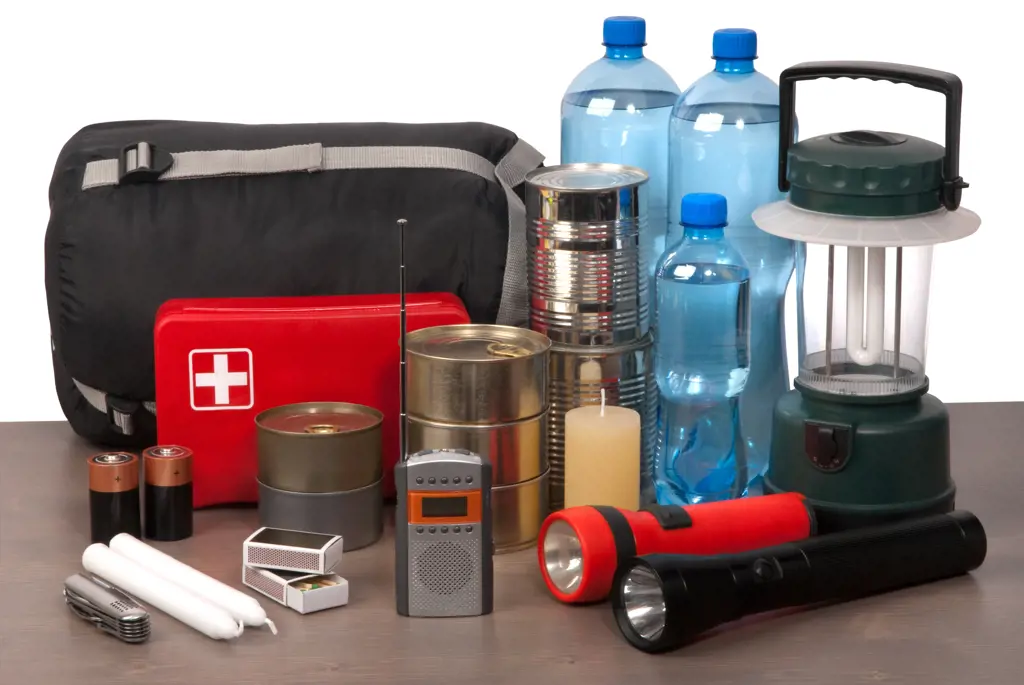
During and after an earthquake, it is crucial to have a well-stocked survival kit that contains specific items and tools to help you navigate through the aftermath safely. These items will assist you in meeting your basic needs, ensuring your comfort, and maintaining your safety. Here are some essentials that should be included in a survival kit for use during and after an earthquake:
- Water: The most important item to have in any survival kit is water. It is recommended to have at least one gallon of water per person per day for drinking and sanitation purposes. This should be sufficient for a family of four for at least three days.
- Food: Non-perishable food items are essential for sustaining yourself during and after an earthquake. Stock up on items like canned goods, energy bars, and dried fruits. Make sure to select food items that do not require cooking or refrigeration.
- Battery-powered or hand-crank radio: Communication is vital during an earthquake. A radio will keep you informed about the situation and any updates from authorities. Make sure to pack extra batteries for the radio or opt for a hand-crank radio.
- Flashlights and extra batteries: Power outages are common during earthquakes, so it is important to have a reliable source of light. Pack flashlights with extra batteries to ensure you have adequate lighting throughout the ordeal.
- First aid kit: Injuries are a common occurrence in earthquakes, so having a well-stocked first aid kit is essential. The kit should include items such as bandages, antiseptic wipes, pain relievers, and any necessary prescription medications.
- Whistle: A whistle can help you alert others to your location if you are trapped or in need of assistance. It is a compact and useful tool that can be easily carried in your pocket or attached to a lanyard.
- Dust masks: Dust and debris are common during earthquakes, and breathing in these particles can be harmful. Dust masks provide protection against inhaling harmful substances and help prevent respiratory issues.
- Gloves and sturdy shoes: After an earthquake, you may need to navigate through debris and potentially hazardous materials. Sturdy shoes and gloves will protect your feet and hands from sharp objects or dangerous materials.
- Cash: During a power outage, ATMs and card payment systems may be temporarily unavailable. It is advisable to keep some cash in your survival kit for emergencies or to purchase necessary items.
- Personal hygiene items: Remember to pack personal hygiene items such as wet wipes, hand sanitizer, and toilet paper. These will help maintain cleanliness and prevent the spread of germs.
- Important documents: Keep a copy of essential documents such as identification cards, passports, insurance policies, and emergency contacts. Store these in a waterproof bag to protect them from damage.
- Emergency blankets: These lightweight, compact blankets are designed to retain body heat and provide insulation. They are crucial for keeping warm in case you are without shelter or heating.
Remember to periodically check and update your survival kit, ensuring that all items are in good condition and have not expired. It is also important to educate yourself and your family on how to use the items in the survival kit effectively. By being prepared and having the necessary tools on hand, you can increase your chances of staying safe and secure during and after an earthquake.
Essential Items to Pack for Exploring the Prairie Wilderness
You may want to see also

What type of food and water should be included in the survival kit to sustain individuals during an earthquake emergency?
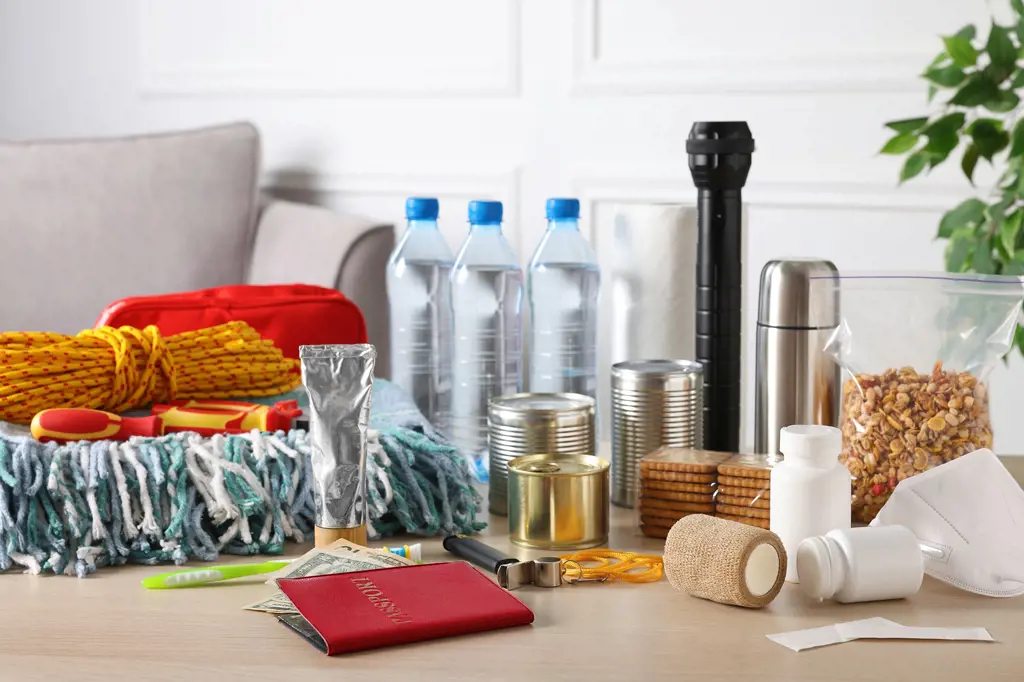
In the event of an earthquake emergency, it is crucial to have a properly stocked survival kit that includes food and water to sustain individuals until rescue or relief efforts can reach them. The following article will discuss the types of food and water that should be included in a survival kit to ensure the highest chances of survival and well-being during such a crisis.
- Water: Water is essential for survival, and it should be the first item to consider when assembling a survival kit. The general rule of thumb is to store at least one gallon of water per person per day, for a minimum of three days. This water should be stored in sealed containers to prevent contamination and should be replaced every six months to ensure freshness. Additionally, it is recommended to include water purification tablets or a water filtration system in the kit, as these can be used to treat water from questionable sources in case supplies run out.
- Non-perishable food: When selecting food items for a survival kit, it is important to choose non-perishable items that require little to no preparation. Canned goods such as beans, soups, and vegetables are excellent choices as they have a long shelf-life and provide essential nutrients. Other good options include energy bars, dried fruit, nuts, and jerky. It is advisable to include a manual can opener in the survival kit, as this will be needed to open canned goods.
- Nutritional considerations: In a high-stress situation like an earthquake emergency, it is crucial to maintain proper nutrition to support physical and mental well-being. Consider including a variety of food items that provide a balance of macronutrients (carbohydrates, proteins, and fats) as well as essential vitamins and minerals. This will help sustain energy levels and overall health during the crisis.
- Special dietary needs: It is important to take into consideration any special dietary needs of the individuals in the survival kit. For example, if someone in the group has food allergies or requires a specific type of diet (e.g., gluten-free or vegetarian), it is important to include food items that cater to these needs. It is also recommended to include a list of any food allergies or dietary restrictions in the survival kit, in case others need to assist the individual during an emergency.
- Rotation and expiration dates: It is important to regularly check the expiration dates on the food and water stored in the kit and replace them as needed. It is also advisable to rotate the food items every six months to ensure freshness. This way, you can be confident that the supplies in your survival kit will be safe to consume in case of an earthquake emergency.
In conclusion, having an appropriately stocked survival kit with food and water is crucial during an earthquake emergency. Including an adequate supply of water, non-perishable food items, considering nutritional needs, and accounting for any special dietary requirements will help ensure the well-being and survival of individuals during such a crisis. Regularly checking expiration dates and rotating supplies will further guarantee the freshness and safety of the food and water stored in the kit. By following these guidelines, you can be prepared to sustain yourself and your loved ones during an earthquake emergency.
The Essential Packing List for a Mediterranean Trip in November
You may want to see also

How important is it to include a first aid kit in the survival kit for an earthquake, and what items should be included in it?
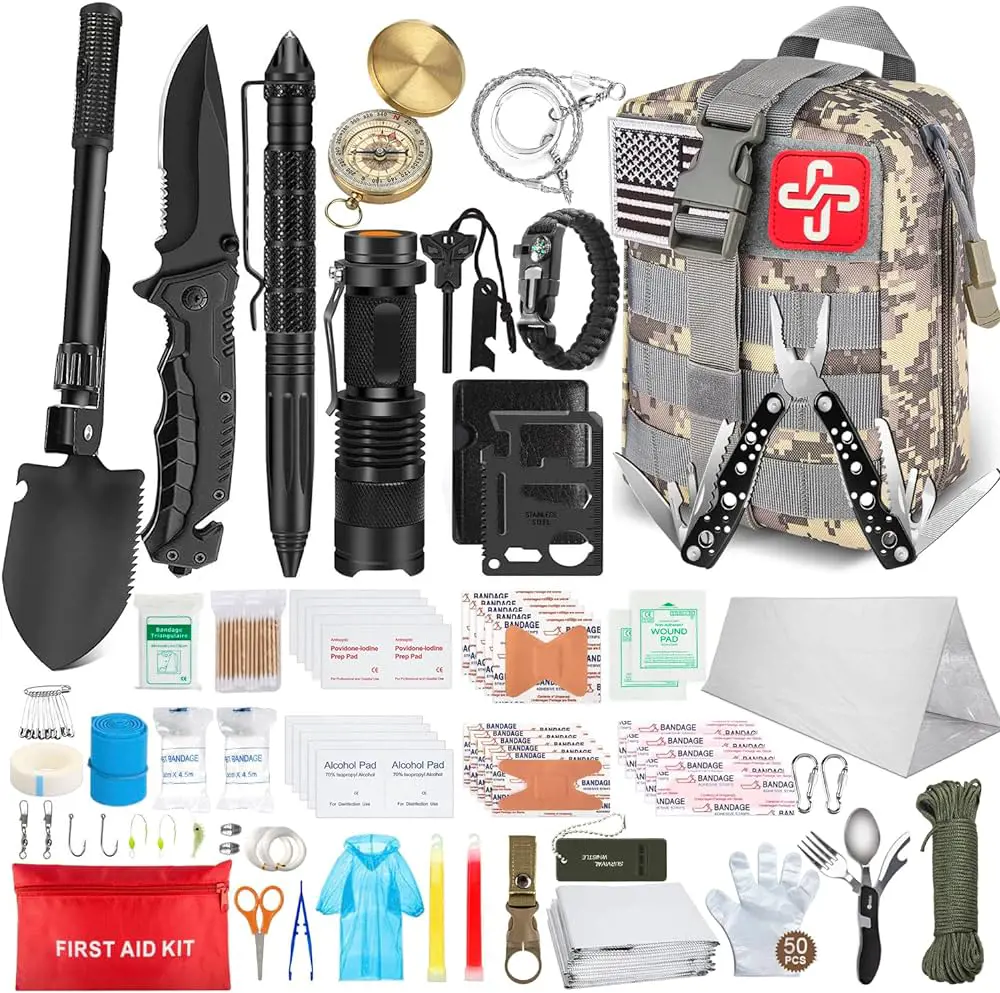
In the wake of an earthquake, one of the most important items to include in a survival kit is a well-equipped first aid kit. Earthquakes are unpredictable natural disasters that can cause severe injuries and medical emergencies. Being prepared with a first aid kit can make a significant difference in the outcome of an emergency situation.
First and foremost, a first aid kit is essential because it allows individuals to provide immediate medical care to themselves and others in the event of an earthquake. During an earthquake, there is a high probability of injuries such as cuts, bruises, fractures, and even more serious conditions like head injuries and internal bleeding. Having a first aid kit readily available can help stabilize and treat these injuries, potentially preventing further complications and even saving lives.
When assembling a first aid kit for earthquake preparedness, it is crucial to include a variety of items that can address a range of medical needs. Firstly, the kit should include basic supplies such as gauze pads, adhesive bandages, medical tape, and antiseptic wipes or solutions for cleaning wounds. These items are essential for treating minor cuts, abrasions, and burns that may occur during an earthquake.
In addition to basic supplies, a first aid kit for earthquakes should also include items such as splints, triangular bandages, and compression bandages. These supplies can be used to stabilize fractures or sprains that may occur due to falling objects or structural damage during an earthquake. It is also important to include tweezers, scissors, and safety pins for removing splinters, cutting bandages, and securing dressings.
Furthermore, a well-prepared first aid kit for an earthquake should contain medications that may be needed in the aftermath of a seismic event. These medications may include pain relievers, antihistamines, and any necessary prescription medications for individuals with specific medical conditions. It is essential to regularly check and rotate these medications to ensure they are not expired and are still effective.
Lastly, it is crucial to include emergency contact information and a first aid manual in the survival kit. During an earthquake, it may be challenging to access medical help quickly, especially if communication systems are disrupted. Including a list of emergency contact numbers and a first aid manual can provide guidance and support when medical professionals are not readily available.
To summarize, including a first aid kit in a survival kit for an earthquake is of utmost importance. A well-equipped first aid kit can provide immediate medical care to those injured during an earthquake, potentially saving lives and preventing further complications. When assembling a first aid kit, it is crucial to include basic supplies, specialized items for stabilizing fractures, necessary medications, emergency contact information, and a first aid manual. By prioritizing the inclusion of a first aid kit in earthquake preparedness efforts, individuals can be better equipped to handle medical emergencies in the aftermath of a seismic event.
Essential Sunscreen Packing Tips for a Trip to Chrissy Fields
You may want to see also

Are there any additional items or specific recommendations that should be considered when packing a survival kit for an earthquake?
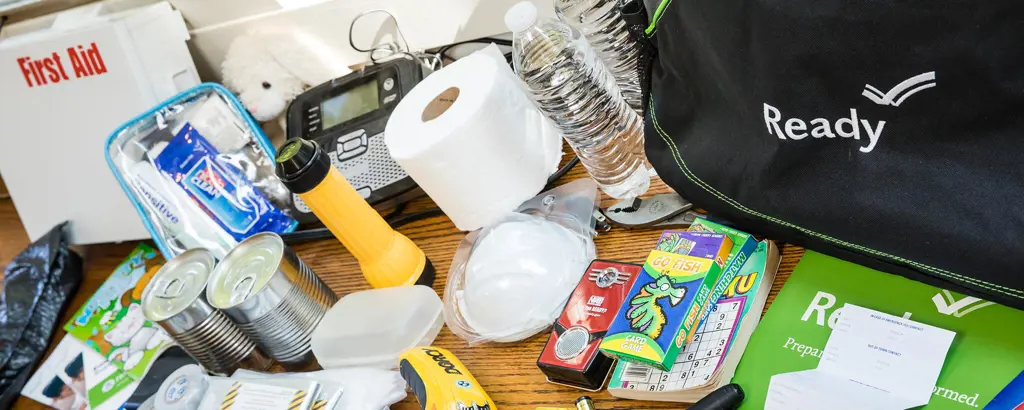
When preparing for an earthquake, it is important to have a well-stocked survival kit that includes essential items to help keep you safe during and after the event. While there are standard items that should be included in any survival kit, there are also additional items and specific recommendations that should be considered for earthquake preparedness.
- Water: In addition to the recommended one gallon of water per person per day for at least three days, it is advisable to have water purification tablets or a portable water filter. This can be helpful in case your water supply becomes contaminated or runs out.
- Food: Pack non-perishable food items that do not require cooking, such as canned goods, energy bars, and dried fruits. It is also a good idea to include a manual can opener and utensils for eating.
- Medications: If you or your family members require prescription medications, be sure to have a sufficient supply in your survival kit. It is recommended to have at least a week's worth of medications on hand. Also include over-the-counter medications like pain relievers, antidiarrheal medication, and any other necessary medical supplies.
- First aid kit: A well-stocked first aid kit is essential for treating minor injuries and administering first aid until professional help arrives. Make sure your kit includes items such as bandages, gauze, adhesive tape, alcohol wipes, antiseptic ointment, and gloves. It is also recommended to include a first aid manual that provides instructions on how to treat various injuries.
- Tools and supplies: Include a basic toolkit that contains items like a wrench, pliers, screwdrivers, and a utility knife. These tools can be useful for turning off utilities, repairing minor damage, or making emergency repairs. It is also important to include items like duct tape, plastic sheeting, and a whistle for signaling for help.
- Personal documents: Keep copies of important documents such as identification cards, insurance policies, and passports in a waterproof container. It is also a good idea to have a USB flash drive or an external hard drive with digital copies of these documents and important contacts.
- Extra clothing and bedding: Pack a change of clothes for each person in your household, including sturdy shoes and rain gear. A warm blanket or sleeping bag should also be included to provide additional warmth in case you need to shelter outdoors.
- Personal hygiene items: Include items such as toothbrushes, toothpaste, soap, hand sanitizer, feminine hygiene products, and toilet paper in your survival kit. These small comforts can make a big difference in maintaining personal hygiene during an emergency.
- Entertainment and comfort items: Earthquake events can often result in extended periods of downtime. It is a good idea to pack items such as playing cards, books, puzzles, and small toys for children to help pass the time. A stress ball or comfort item like a favorite stuffed animal can also provide emotional support during stressful situations.
- Cash and coins: In case power outages affect ATMs and electronic payment systems, it is advisable to have some cash and coins on hand to purchase essential items or services.
It is important to regularly check and update your earthquake survival kit. Ensure that all food items are within their expiration dates, medications haven't expired, and batteries in flashlights or radios are still functional. Also, make sure to store your survival kit in an easily accessible area that all household members are aware of.
By considering these additional items and specific recommendations, you will be better prepared to handle the challenges of an earthquake and increase your chances of survival until help arrives.
Essential Packing Guide for Backpacking Colombia
You may want to see also
Frequently asked questions
In a survival kit for an earthquake, it is important to include essential items that will help you stay safe and comfortable during and after the earthquake. Some essential items to include are non-perishable food, water, a flashlight, batteries, a first aid kit, a radio, extra clothing and blankets, a wrench or pliers to turn off utilities, a whistle to signal for help, and a dust mask to filter out contaminated air. Additionally, it is important to include personal items such as medications, important documents, cash, and a spare set of keys.
Including a fire extinguisher in your earthquake survival kit is highly recommended. During an earthquake, gas lines may rupture, electrical wires may spark, and fires can easily start. Having a fire extinguisher can help you put out small fires and prevent them from spreading. Make sure the fire extinguisher in your kit is up to date and in good working condition.
Yes, it is important to include a pet emergency kit in your earthquake survival kit if you have pets. Your pet's emergency kit should include food and water for at least three days, collapsible bowls, any necessary medications, vaccination records, a leash and harness, a pet carrier, toys or comfort items, and waste bags. It is also a good idea to include a recent photo of your pet in case they get lost during the earthquake.







